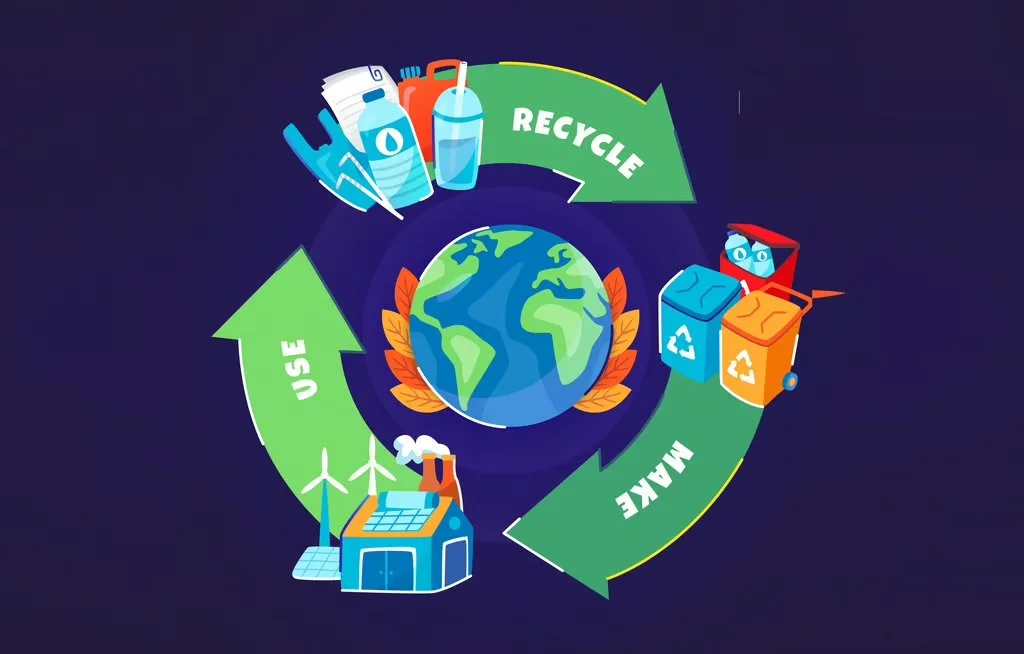Closing the Loop: How Plastic Recyclers Drive the Circular Economy
Building a Circular Economy: How Plastic Recyclers Hold the Key
The phrase “circular economy” has been making waves in industries worldwide—and for good reason. It represents a shift away from the wasteful “take-make-dispose” model toward a system designed to eliminate waste and continuously reuse resources. In the plastics industry, this transition is crucial.
Instead of relying on virgin materials, a circular economy for plastics focuses on recycling and reusing materials to keep them in the value chain for as long as possible. And at the center of this transformation are the plastic recyclers—key players who make it possible to recover, process, and repurpose plastics.
At Midas Peak, we’ve seen firsthand how critical these efforts are. Let’s explore why plastic recyclers are indispensable, the challenges they face, and what’s needed to fully realize a circular economy for plastics.
What is a Circular Economy?
A circular economy is a regenerative system where materials are reused, remanufactured, or recycled, rather than being discarded. It contrasts with the traditional linear economy, where resources are extracted, transformed into products, and ultimately thrown away.
For plastics, a circular economy looks like this: Used materials—like bottles, containers, and packaging—are collected, sorted, processed, and returned to manufacturers to create new products. Instead of waste piling up in landfills or polluting the environment, these materials remain valuable resources in an ongoing loop.
The Role of Plastic Recyclers
Plastic recyclers are the backbone of this system, ensuring that discarded materials re-enter the economy instead of being lost to landfills or incinerators. Their work directly supports sustainability efforts while also benefiting the economy.
1. Converting Waste into Resources
Recyclers turn plastic waste into valuable raw materials that manufacturers can use to create new products. This process keeps plastic in circulation and reduces the need for virgin materials.
2. Mitigating Environmental Damage
Plastics are notoriously difficult to manage in the environment, contributing to pollution and harming ecosystems. Recyclers help divert waste from harmful endpoints, keeping it out of our oceans, rivers, and natural landscapes.
3. Reducing Greenhouse Gas Emissions
Recycling plastics uses significantly less energy than producing new plastics from raw materials. This means fewer greenhouse gas emissions, making recycling a powerful tool for combating climate change.
4. Supporting Jobs and Innovation
The recycling industry generates jobs at every level—from collection and sorting to processing and product development. Recyclers are also driving innovation with new methods for processing challenging materials and improving efficiency.
Challenges in Plastic Recycling
Despite its critical role, plastic recycling isn’t without its hurdles. Several factors limit its effectiveness and scalability:
• Contamination in Recycling Streams: Non-recyclable materials and mixed plastics can disrupt recycling processes and reduce the quality of the final product.
• Market Competition with Virgin Plastics: Virgin plastics are often cheaper to produce, making it harder for recycled plastics to compete.
• Complexity of Plastic Types: Some plastics, such as multi-layer films, are much harder to recycle than simpler materials like PET bottles.
• Limited Infrastructure: Many regions lack the facilities needed to collect, sort, and process plastics effectively, leading to missed opportunities for recycling.
Overcoming These Challenges
To strengthen the role of plastic recyclers and fully realize a circular economy, we need to address these challenges with innovative solutions:
1. Advanced Sorting Technologies
Modern optical and AI-powered systems can sort plastics with incredible accuracy, reducing contamination and improving the quality of recycled materials.
2. Policies that Support Recycling
Governments can promote recycling by implementing extended producer responsibility (EPR) programs, incentivizing the use of recycled materials, and mandating recycled content in products.
3. Building Market Demand
To make recycling financially sustainable, there must be robust demand for recycled plastics. Manufacturers and brands can lead by committing to using recycled materials in their products, while consumers can support this shift by choosing products with recycled content.
4. Collaboration Across the Supply Chain
Recyclers, manufacturers, retailers, and consumers must work together to create a seamless system that prioritizes recycling at every stage of a product’s life.
Midas Peak: Driving a Circular Future
At Midas Peak, we’re proud to play a role in fostering a circular economy. We specialize in connecting Material Recovery Facilities (MRFs) with processors who can transform plastic waste into valuable resources. By brokering high-quality recycled plastics and streamlining logistics, we ensure that these materials are kept in use and out of landfills.
We understand the challenges faced by recyclers and processors, and we’re here to provide solutions that improve efficiency and scalability. Whether you’re an MRF with materials to place sustainably or a processor seeking a reliable partner, Midas Peak is your go-to resource for creating a circular economy.
A Call to Action
A circular economy isn’t just a vision—it’s a necessity for our planet and future generations. Plastic recyclers hold the key to making this possible, but they need the support of manufacturers, policymakers, and consumers. Together, we can close the loop on plastic waste and build a sustainable system that benefits everyone.
If you’re ready to take the next step, contact Midas Peak today. Let’s work together to transform waste into opportunity and make a circular economy for plastics a reality.

